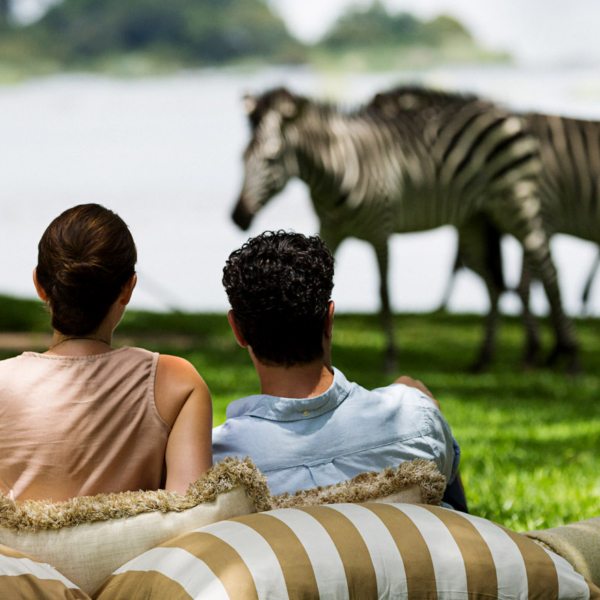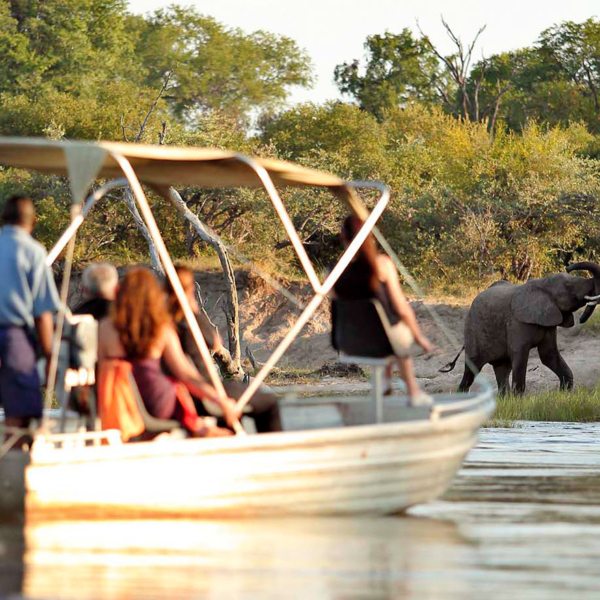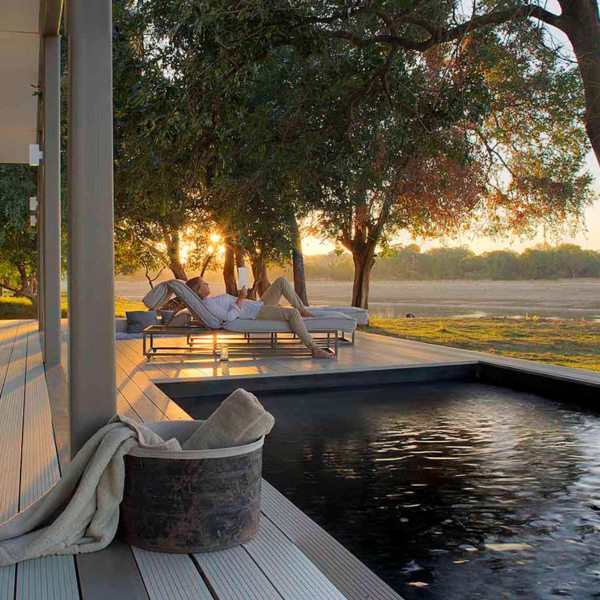The Liuwa Plains wildebeest migration in Zambia is one of Africa’s great natural phenomena. It’s second in enormity only to the Masai Mara–Serengeti trek, and yet it’s hardly known. Each year, 45,000 wildebeest seek fresh grazing in the remote, sublime Liuwa Plains. Viewing these vast herds on the move during a Zambia safari is an unforgettable sight.
We’d come to this remote corner of western Zambia to see the second largest migration of wildebeest (after East Africa) in the world. My partner and I had heard whispers about the legendary Liuwa Plains and wanted to catch them inundated with wildebeest.
My research told me that the wildebeest migration follows the rains and reaches Liuwa Plains National Park between September and November each year. So we planned our adventure for late November in the hope that, even if the rains were late, we’d catch the first storms and the start of the wildebeest great trek in search for greener pastures.
From our camp, located on a beautiful little island of trees in the heart of the park, we set off for an afternoon game drive in an open 4×4. What immediately struck me was the vastness of the terrain. The plains stretched away in every direction, as far as the eye could see. Spread out around us lay 3660 square kilometres of open grassland. It was sublime and disorientating, as though we were tiny insects on a giant table.
In the distance I could see tall, roiling thunderclouds and curtains of rain. This was the wildebeest’s calling card. Surely, the great herds could not be far behind…
As we drove towards the purple horizon, our guide Enoch told us about the area: ‘Liuwa Plains is one of Africa’s oldest conservation areas – protected by the king of Barotseland since the 1880s. But it was only proclaimed a national park in 1972. This is the place to come to if you don’t want to see another vehicle or person.’
The game viewing was good from the outset. A tiny oribi darted away from our vehicle, a flash of fawn in the green grass. More sightings came thick and fast: red lechwe, eland, tsessebe and roan antelope. On a slight rise we spotted a cheetah, scanning the antelope and thinking, no doubt, about his dinner menu. Later, we came upon a pack of African wild dog, loping through the grass, also on the lookout for a meal.
Stopping at Miyanda Pools, we were overwhelmed by the variety of birdlife. There were wattled and crowned cranes, spur-winged geese and blacksmith lapwings in abundance, as well as a pair of stately Denham’s bustards.
‘This place is a birder’s paradise. We have more than 330 species,’ said Enoch. ‘Liuwa supports globally important populations of waterbirds. The vulnerable crowned and wattled cranes are plentiful, sometimes forming flocks numbering several hundred. Wattled cranes are the most wetland dependent of Africa’s cranes and Liuwa is one of their most important breeding sites in the world.’
We pressed on northward. The sun was slipping towards the horizon and painting the clouds orange. ‘Now we’ll find you the migration!’ said Enoch, building the drama.
We came to a pan filled with water and parked. A herd of about a 30 wildebeest slowly approached to drink. After a while, another small herd arrived to slake its thirst. Others gradually joined their ranks around the water’s edge, swelling the numbers into the hundreds.
Then suddenly I noticed that the treeline in the distance appeared to be moving. I picked up my binoculars and focused. To my shock and joy, I saw that the whole horizon was filled with approaching wildebeest.
‘Here they come!’ I called out, handing the binoculars to my partner.
Enoch started the engine and slowly drove in among the wildebeest. We were completely surrounded. It was the most astonishing sensation: like being part of the herd. Everywhere was dust, the clop of hooves on earth, the whisper of legs brushing the long grass and always the insistent gnu-ing sound of the beests, a soporific drone that numbed the mind. On and on we drove, deeper into a herd that seemed to have no beginning and no end. A sea of horn and hide, a sea of life!
Enoch drew to a halt and let the living herd spool past. ‘The park is thought to have a population of about 45,000 wildebeest,’ he said. ‘They cross the Angola border northwest of here, trekking across the plains of Liuwa. It’s one of Africa’s best kept secrets.’
A scarlet sun had settled on the horizon, coating the land in a honeyed glow. Enoch drove out the other end of the herd, brought the 4×4 to a halt, got out and set up a table with snacks and drinks. We stood there staring at the great spectacle: a tableau of migrating wildebeest bathed in the soft light of dusk. I had the feeling, just then, that this was just about as good as a Zambian safari could get.




















